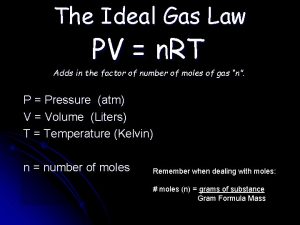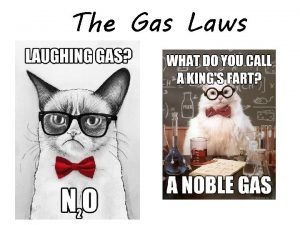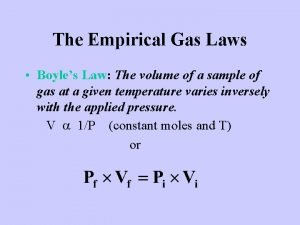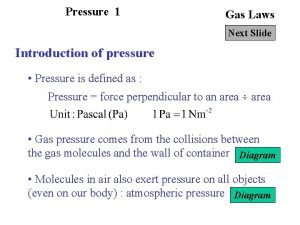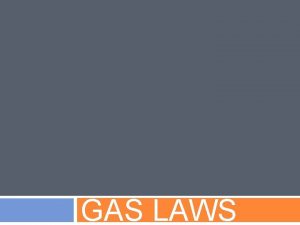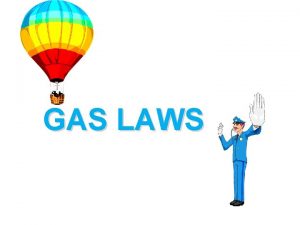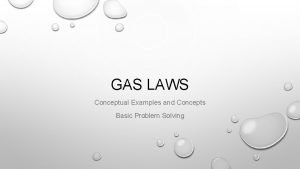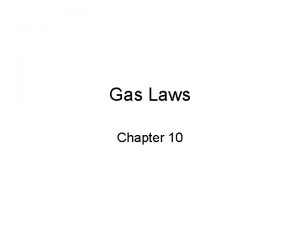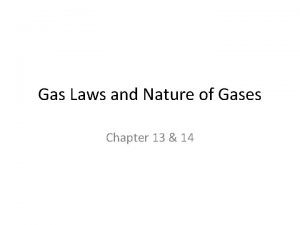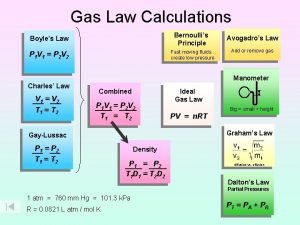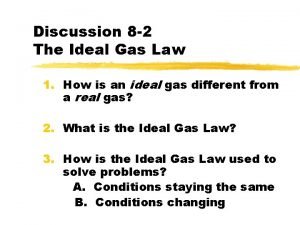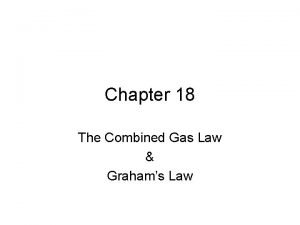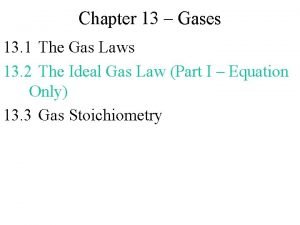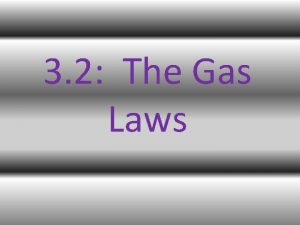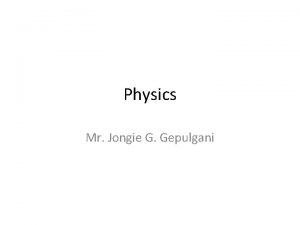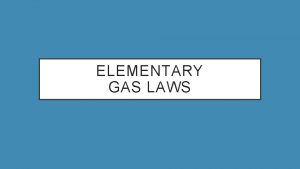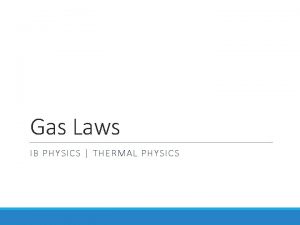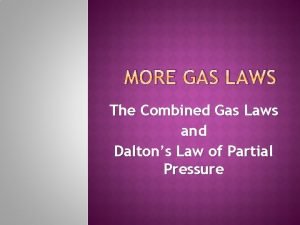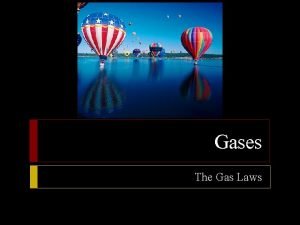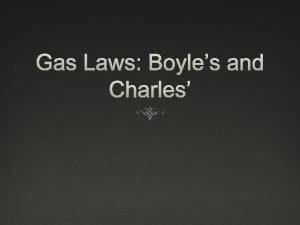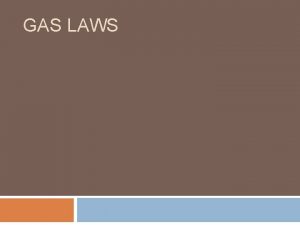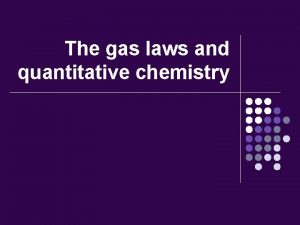Physics Mr Jongie G Gepulgani The Gas Laws















- Slides: 15

Physics Mr. Jongie G. Gepulgani

The Gas Laws This topic will focus on the volume and density of gases under varying conditions of temperature and pressure.

The Boyle’s Law • A decrease in volume produces an increase in absolute pressure. or

The Boyle’s Law Sample problem: A cylinder fitted with a piston contains gas at a pressure of 35. 5 lbs/in 2 as indicated by a gage mounted to the outside of the cylinder. The atmospheric pressure is 14. 5 lbs/in 2. If the piston is forced down reducing the volume in the cylinder to one-fourth of its original volume while holding the temperature of the gas constant, determine the new reading on the pressure gage.

The Boyle’s Law The Solution: Get the absolute pressure: From the equation:

The Boyle’s Law The Solution: Substitute values: Solving for P 2: absolute Since we are asked for the gage pressure, then:

The Charles’ Law The volume is directly proportional to the absolute temperature at constant pressure. The absolute temperatures can either be Kelvin degrees or Rankine degrees.

The Charles’ Law Sample problem: A quantity of air occupies a volume of one cubic foot on a day when the temperature is 15 degrees F. What will be the volume of this quantity of air when the temperature increases to 85 degrees F, and the pressure stays the same?

The Charles’ Law The solution: Convert degrees F to degrees R first. From the equation:

The Charles’ Law Hence, Cross multiply:

The Gay-Lussac’s Law An increase in the absolute temperature of the gas, the average speed of the molecules increases in constant volume. The faster the speed, the greater the pressure the gas molecules exert.

The Gay-Lussac’s Law Sample problem: The tire of a bicycle is filled with air to a gage pressure of 50. 0 lbs/in 2 at 58 degrees F. What is the gage pressure in the tire on a day when the temperature rises to 86 degrees F? Assume that the volume of the tire does not change and the atmospheric pressure is 14. 7 lbs/in 2 ?

The Gay-Lussac’s Law The solution: Convert first to absolute temperatures and pressures. Substituting these values to the formula:

The Gay-Lussac’s Law But we need to convert the absolute pressure to gage pressure. Thus,

• Next topic : – The General Gas Law, The Atmosphere
 Useless laws weaken the necessary laws
Useless laws weaken the necessary laws Gas laws crash course
Gas laws crash course Is boyle's law direct or indirect
Is boyle's law direct or indirect Empirical gas laws
Empirical gas laws Combined gas laws formula
Combined gas laws formula All the gas laws
All the gas laws Different gas laws
Different gas laws Combined gas law
Combined gas law Conceptual problems examples
Conceptual problems examples Boyle's law calculation example
Boyle's law calculation example Gas laws formula
Gas laws formula 3 gas laws
3 gas laws Different gas laws
Different gas laws Combined gas laws
Combined gas laws Chapter 13 gases
Chapter 13 gases Which gas laws are inversely proportional
Which gas laws are inversely proportional

